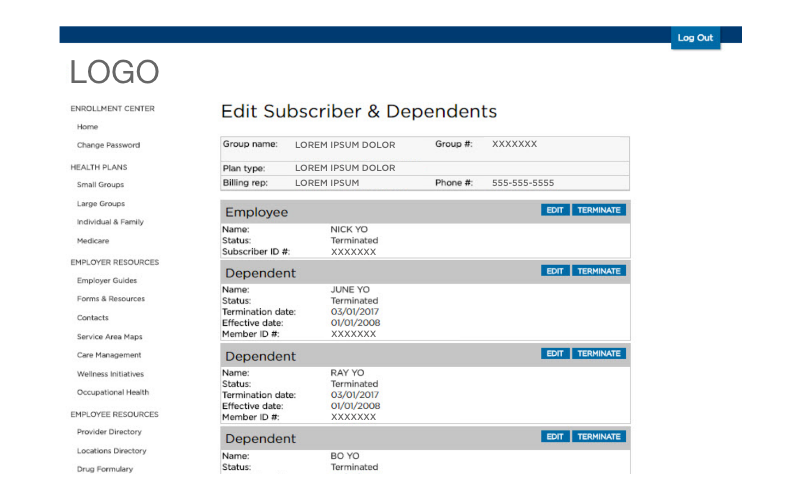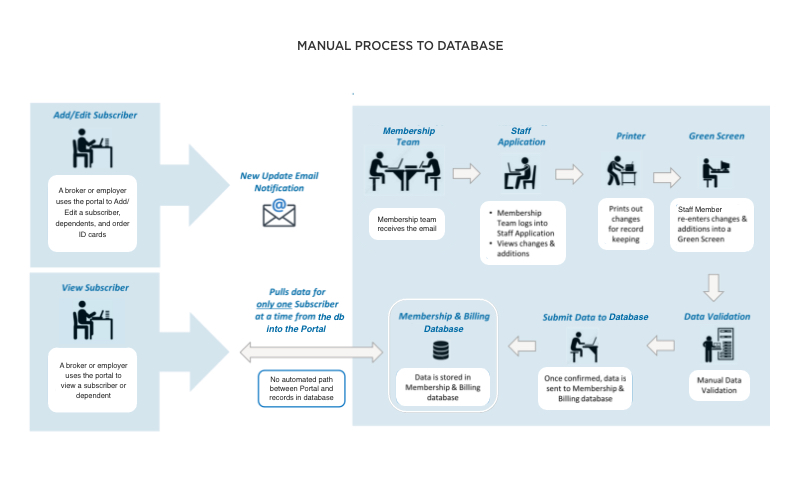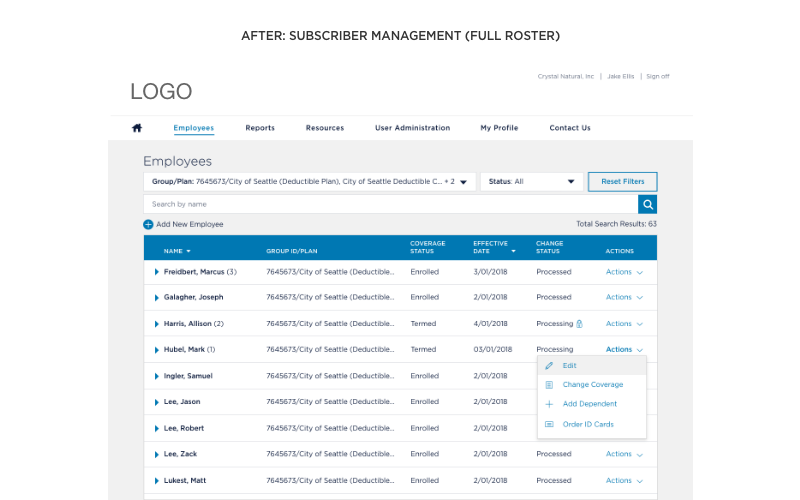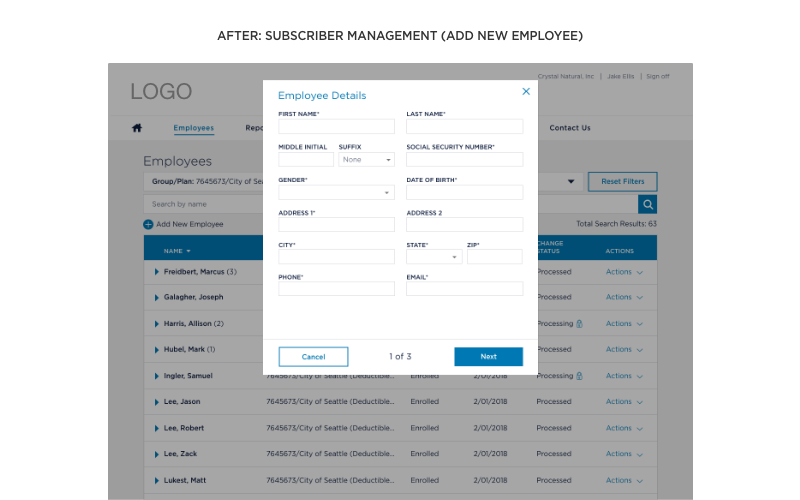The Challenge
In order to grow and retain business, the client needed to make it easier for employers to manage all aspects of their employee’s healthcare. The existing application was lacking in features and functionality and processes were inefficient. There were outdated technical systems that were creating barriers as well as an unappealing design that was not consistent with their brand. Exact pain points needed to be identified and their nuances teased out in order to succeed in the redesign.
The Discovery
Consultations with SMEs revealed some manual, error-prone processes that were causing many issues. Comparative analysis informed capabilities that were missing or lacking in order to be competitive. User interviews revealed there was little confidence in the application’s ability to help users complete tasks and accomplish their goals. The existing application was becoming obsolete.
The Outcome
The new employee portal offered existing and potential new customers a single location for management, with more self-service tools and an improved user experience. Introducing automated record processing was big a win for customers and support staff, reducing errors and inefficiencies, saving time and resources. The updated interactions and visuals with reflection of brand reinforced visual identity. Customers could now accomplish their goals with greater ease and speed.
Research
Initial research for this project was conducted by both the client and my team before I joined. Some of the research included interviews with users and SMEs, analysis of other similar applications, and current state analysis. I used this documentation to get an understanding of the ecosystem and the users.
User interviews uncovered the following major themes:
- Enrollment processing was time intensive for employers and membership support staff
- Data re-entry time delays occurred often and frustrated employers and support staff
- Backend data flow into downstream systems was a manual process
- Manual data re-entry into other systems produced many errors and inconsistencies
- Inability to view a full roster list caused distrust in the system. Users could not verify accurate information, status, or successful inputs
Plan
During the planning phases of the project, I used research findings to inform design decisions. I synthesized user profile information into personas that guided me in my design process.
Other tools and methodologies used to plan and begin preliminary design were the following:
- Worked closely with technical team during concept phases to ensure feasibility
- Used journey mapping to understand and illustrate current and proposed future state processes relating to subscriber management
- Collaborated with the team to map out user flows, working out interaction complexities and establishing foundational design
- Rendered sketches and low fidelity wireframes to ideate and convey concepts and interactions
- Consulted with the client’s internal designers as needed for feedback to ensure brand alignment
Design & Impact
After working on portions of interactions in lower fidelity, I applied visual design polish consistent with the brand. As the only designer on the project at this point, I managed the design portion of the project independently, reaching across teams and keeping with the overall timeline.
Top successes of the redesign were the following:
- Automated record processing increased efficiency and resolved issues in user experience, saving resources for the client
- Access to all-up roster lists allowed greater visibility, increased accuracy, and boosted confidence in the system
- Moving navigation from vertical, nested pattern to horizontal bar improved wayfinding and provided quicker access to information
- The dashboard offered personalized and high level information to help guide the management experience
Testing & Impact
The client had a process in place for user acceptance through soft launch and feedback. Independently, I gained support internally and with the client to plan and conduct a formal usability test while my team was still in the development phase.
After working with the client to secure participants, I drew up the required assets, including a test plan, consent forms, moderator script, participant document and questionnaire. I worked with the technical team to secure the environment and worked out logistics. Next, I trained a colleague to moderate the tests because…I had to go have a baby a month early! The moderator did an excellent job capturing areas of improvement and translating findings into a digestible document. The recommendations were passed to the client to carry forward and a number of high importance and/or fast fixes were implemented before handoff.
Although usability evaluations were not a delivery requirement, the dedication to ensure the handoff of an excellent product spoke volumes to the client.














